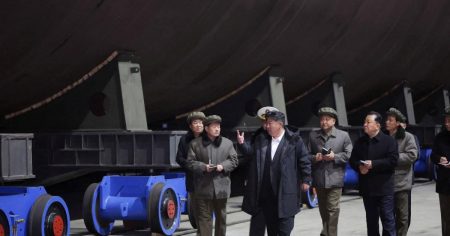This incident at Tehran’s Mehrabad International Airport encapsulates the ongoing tension between the Iranian regime’s stringent dress code enforcement and the burgeoning resistance of Iranian women. A video circulating on social media depicts a woman confronting a Muslim cleric, purportedly after he reprimanded her for not adhering to the mandatory hijab law. In a defiant act, she removes the cleric’s turban and drapes it over her own head, effectively using the symbol of religious authority as a makeshift headscarf. This bold gesture transforms the cleric’s attempt at enforcing conformity into a powerful statement against the regime’s restrictions on women’s freedom. The woman’s actions resonate with the wider sentiment of Iranian women who are increasingly challenging the compulsory hijab, risking severe repercussions to express their autonomy.
The online dissemination of the video sparked conflicting narratives. While activist Masih Alinejad championed the woman’s act as a symbol of resistance against the oppressive regime, state-affiliated media outlet Tasnim News Agency countered with claims that the woman suffered from “severe psychological issues” and had engaged in unprovoked attacks at the airport. This attempt to discredit the woman by attributing her actions to mental instability echoes a recurring pattern employed by the Iranian authorities to suppress dissent. By labeling those who challenge the regime as mentally ill, the authorities seek to undermine their credibility and justify their subsequent detention and forced treatment. This tactic has become increasingly prevalent following the widespread “Woman, Life, Freedom” protests, demonstrating the regime’s escalating efforts to silence opposing voices.
The conflicting narratives surrounding the airport incident highlight the broader struggle between the Iranian regime and those who resist its restrictive policies. The regime, through its state-controlled media, seeks to maintain control of the narrative by framing dissent as the product of mental instability, thereby deflecting attention from the underlying causes of the protests and discrediting those who participate in them. On the other hand, activists and human rights organizations work to amplify the voices of the protestors, highlighting the systemic nature of the oppression they face and advocating for their rights. The incident at the airport becomes a microcosm of this larger conflict, symbolizing the struggle for freedom of expression and the fight against state repression.
The Iranian regime’s use of the “mental illness” narrative to discredit dissenters, particularly women who violate the hijab law, is a well-documented tactic. This strategy allows the authorities to delegitimize the protestors’ grievances and paint them as individuals acting irrationally rather than as part of a broader movement for social change. The regime often forcibly commits those deemed “mentally unstable” to psychiatric hospitals, effectively silencing them and preventing them from participating in further protests. This practice raises serious concerns about the misuse of psychiatric institutions as tools of political repression. International human rights organizations have condemned this tactic, highlighting the chilling effect it has on freedom of expression and the right to peaceful assembly.
The incident at the airport and the subsequent attempts to discredit the woman involved are part of a larger pattern of repression in Iran. The “Woman, Life, Freedom” protests, sparked by the death of Mahsa Amini in police custody for allegedly violating the hijab law, have been met with brutal crackdowns by the regime. Thousands of protesters have been arrested, and many have faced harsh sentences, including the death penalty. The regime’s response to these protests demonstrates its unwavering commitment to maintaining control and suppressing any challenge to its authority. The international community has condemned the regime’s actions, calling for an end to the violence and respect for human rights.
The courageous act of the woman at Mehrabad International Airport, regardless of the regime’s attempts to discredit her, has become a potent symbol of resistance. Her defiance resonates with the ongoing struggles of Iranian women and their fight for autonomy and freedom of expression. The incident underscores the growing tension between a repressive regime and a population demanding change. The video, widely shared online, serves as a testament to the power of social media in circumventing state censorship and amplifying the voices of dissent. Despite the risks they face, Iranian women continue to challenge the regime’s restrictive policies, inspiring others to join their fight for a more just and equitable society.











